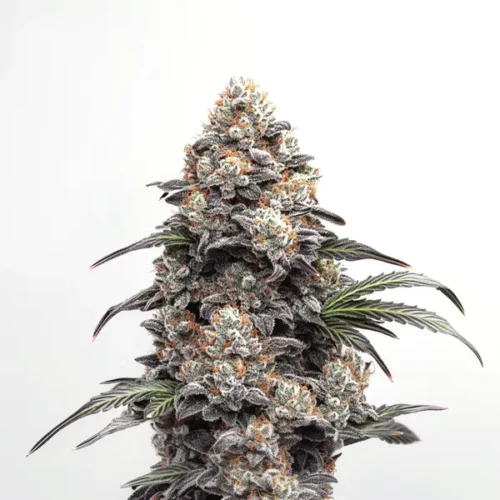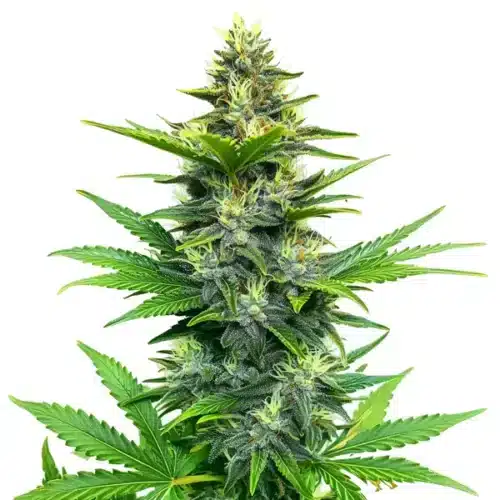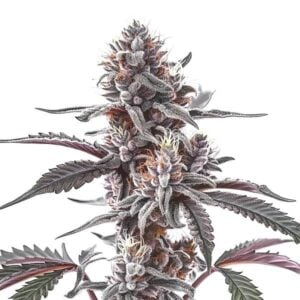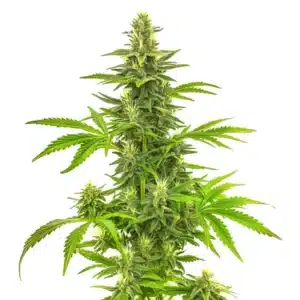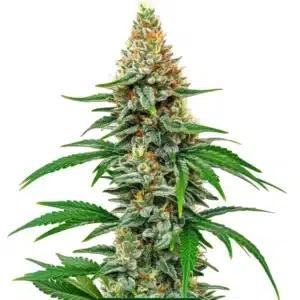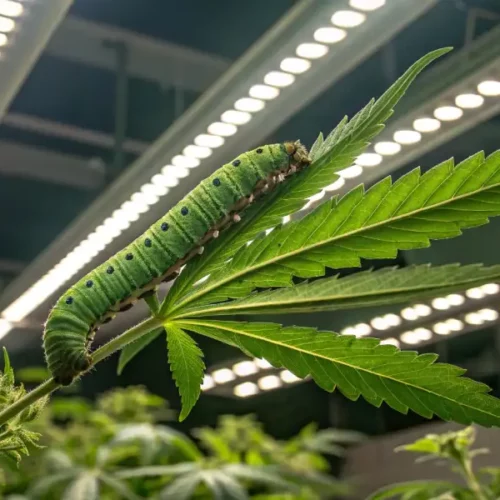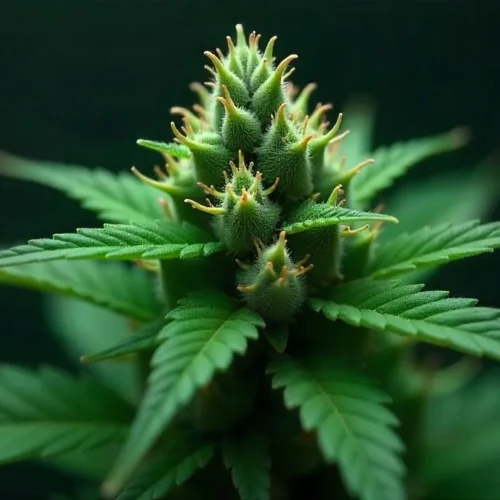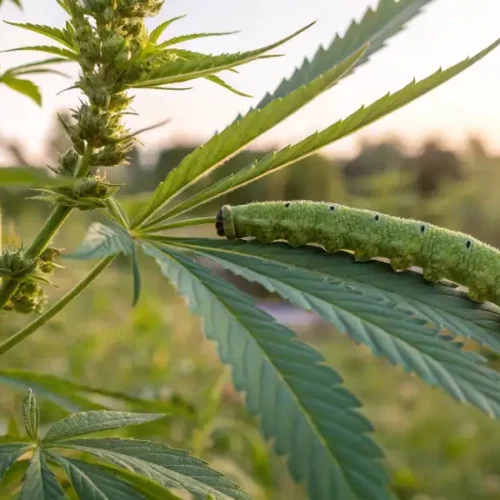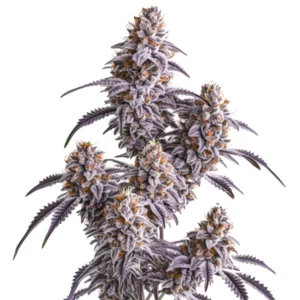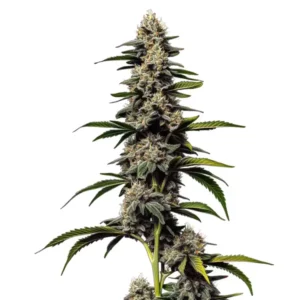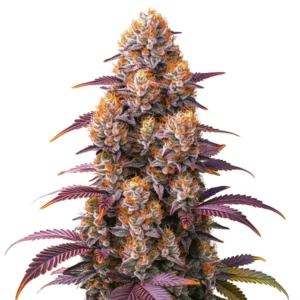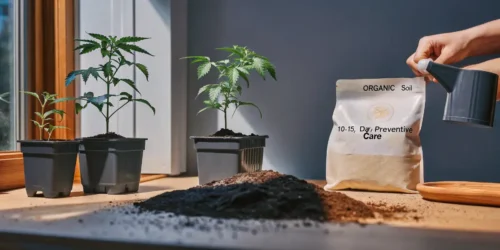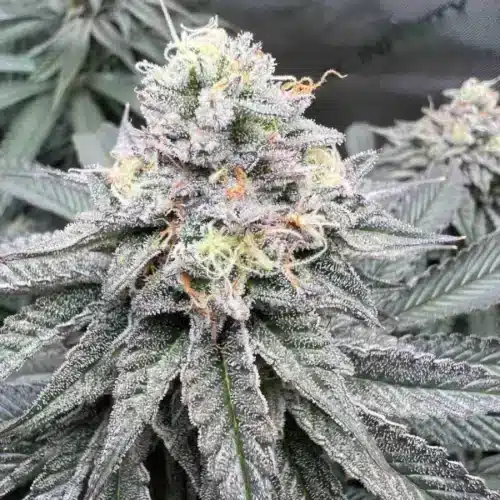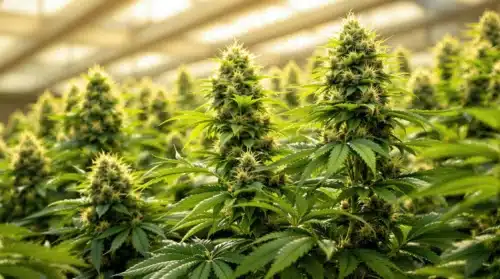Is Weed Ash Good For Plants? In the quest for sustainable and organic gardening practices, many gardeners and plant enthusiasts often find themselves pondering unconventional resources. One such resource, which has sparked curiosity and debate alike, is weed ash – the residual product of burning weeds. This article aims to explore the multifaceted role of weed ash in gardening, shedding light on its potential benefits, answering the question is marijuana ash good for plants, exploring practical applications, and highlighting the precautions necessary to harness its full potential.
Weed Ash: Composition and Nutrient Content
The essence of utilizing weed ash in gardening hinges on its rich composition and the plethora of nutrients it contains. Delving deeper into this subject reveals why weed ash could be considered a treasure trove of minerals essential for plant growth and soil enhancement. Additionally, understanding various weed ash uses can help gardeners maximize its potential benefits.
Recommended Strains
Alien Gorilla Glue
 THC: 23% - 24%
THC: 23% - 24% Type of seed: Feminized
Type of seed: Feminized Phenotype: Mostly Indica
Phenotype: Mostly Indica Day to flower: 8 - 10 weeks
Day to flower: 8 - 10 weeks
Alien Gorilla Glue Regular
 THC: 22% - 24%
THC: 22% - 24% Type of seed: Regular
Type of seed: Regular Phenotype: Mostly Indica
Phenotype: Mostly Indica Day to flower: 8 - 9 weeks
Day to flower: 8 - 9 weeks
The Chemical Makeup of Weed Ash
Weed ash results from the combustion of plant material, a process that reduces the organic components to inorganic ash, which is rich in minerals. Unlike other organic residues, the combustion process ensures that most of the material’s mass is lost to the air as carbon dioxide and water vapor, leaving behind a concentrated source of minerals. The chemical makeup of weed ash typically includes a high percentage of potassium carbonate, along with smaller amounts of phosphate and trace elements such as magnesium, calcium, and sulfur. These elements are crucial for plant growth, playing vital roles in cellular processes, energy transfer, and the synthesis of proteins and DNA.
Nutrients in Weed Ash Beneficial to Plants
- Potassium (K): Often the most abundant nutrient in weed ash, potassium plays a pivotal role in plant health. It regulates opening and closing of stomata, thereby controlling water loss and intake. It also activates enzymes and is vital for the synthesis of proteins and starches.
- Calcium (Ca): Calcium is essential for cell wall structure and stability. It aids in the transport of other nutrients within the plant and plays a key role in enzymatic processes and cell division.
- Magnesium (Mg): This nutrient is a central component of the chlorophyll molecule, making it essential for photosynthesis. Magnesium also aids in the activation of many plant enzymes needed for growth.
- Phosphorus (P): Though present in lesser amounts, phosphorus is crucial for energy transfer within the plant, helping convert light energy into chemical energy. It also contributes to the development of roots and the maturation of cannabis seeds and fruit.
- Trace Elements: Trace elements, though required in smaller quantities, are no less important. Elements like sulfur, iron, and zinc contribute to various plant functions, including disease resistance, growth regulation, and the synthesis of vital proteins.
The variability in nutrient content of weed ash can depend on the type of plants burned. Weeds that have deep root systems may draw up more diverse minerals from the soil, potentially enriching the ash with a wider range of nutrients.
The nutrient content and chemical makeup of weed ash highlights its potential as a multi-faceted garden amendment. By providing essential minerals, it can contribute significantly to the health and growth of plants. However, the key to harnessing these benefits lies in knowing how to apply weed ash appropriately, taking into account the specific needs of the soil and plants in your garden.
Promos & Deals
The Historical Context of Ash in Agriculture
Exploring the historical context of ash in agriculture unveils a rich tapestry of traditional farming practices, highlighting the enduring relationship between ash usage and plant health. This exploration not only provides insights into the past but also illuminates the contemporary inquiry: Is weed ash good for plants?
Ash, derived from the burning of plant material, has been a cornerstone in agriculture for centuries, spanning various cultures and civilizations. Its application to the soil is rooted in ancient wisdom, where farmers recognized its potential to rejuvenate the earth and foster bountiful harvests. The practice of using ash, particularly wood ash, predates modern agricultural science, yet it instinctively capitalized on the fundamental needs of plants for minerals and nutrients.
The shift from using wood ash to incorporating weed ash in gardening practices highlights a growing focus on making the most of organic waste. As we delve into the agricultural use of ash, it’s imperative to consider the specific benefits and concerns associated with weed ash. The question Is weed ash good for plants? emerges naturally from this historical narrative, driving a modern investigation into the efficacy and safety of weed ash as a garden amendment.
In ancient times, ash was valued for its ability to amend soil properties, notably improving pH levels and enhancing soil fertility. These benefits are attributed to the ash’s rich mineral content, including potassium, calcium, magnesium, and phosphorus—essential elements that support plant growth, fruit development, and overall health. The practice of ash application was guided by empirical observations of improved plant vigor and yield, laying the groundwork for a sustainable, circular approach to resource management in agriculture.
Fast forward to the present, and the discourse around weed ash incorporates both traditional insights and scientific scrutiny. The inquiry into Is weed ash good for plants? is not merely academic; it reflects a growing interest in sustainable gardening practices that leverage available organic materials to support plant health. The historical use of ash in agriculture highlights its potential benefits, but modern gardeners and agriculturalists aim to apply this knowledge in response to today’s environmental challenges, such as soil health, nutrient cycling, and sustainable management of garden waste.
Exploring the history of ash in agriculture offers valuable insights into its potential applications today, especially with weed ash. As gardeners draw lessons from the past, they also face the challenge of adapting traditional methods to modern ecological and horticultural environments. The question Is weed ash good for plants? encapsulates this challenge, inviting a nuanced examination of weed ash’s benefits against its proper use and potential limitations within the garden ecosystem.
In conclusion, the historical context of ash in agriculture underscores its long-standing value to plant health and soil vitality. This backdrop provides a rich foundation for addressing the contemporary question of Is weed ash good for plants? By combining historical practices with modern scientific insights, gardeners and agriculturalists can effectively manage the complexities of sustainable soil care. This approach ensures that the use of ash as a valuable agricultural amendment will remain relevant for future generations.
How Weed Ash Affects Soil Health and Plant Growth
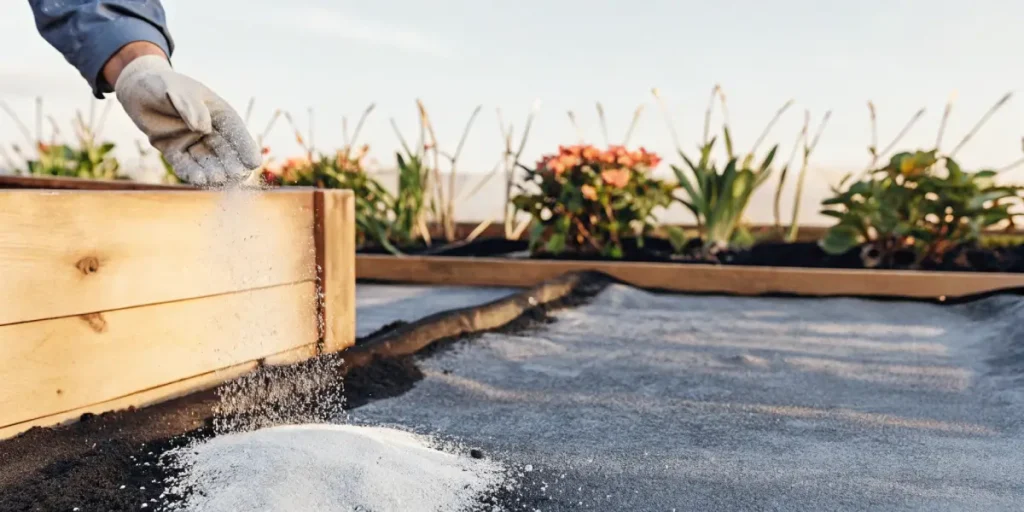
In the ongoing exploration of sustainable gardening practices, the question Is weed ash good for plants? garners significant attention among gardeners seeking organic solutions to enhance soil health and plant growth. The intrigue surrounding weed ash lies in its dual capacity to alter soil composition beneficially and serve as a nutrient-rich supplement for plant life. This segment delves deeper into the impact of weed ash on soil health and, consequently, on plant growth, highlighting why this natural by-product is gaining popularity among the green-thumbed community.
The Alkaline Advantage: Balancing Soil pH
Soil pH, a critical factor in determining plant health, can be significantly influenced by the addition of weed ash. Predominantly alkaline in nature, weed ash can raise the pH level of acidic soils, bringing them closer to a neutral range that is optimal for most plants. This shift in pH can have a profound effect on the soil’s overall health, improving the availability of nutrients that are otherwise locked in acidic conditions. For gardeners pondering “Is weed ash good for plants?”, this characteristic of weed ash offers a clear benefit: by moderating soil acidity, it can create a more conducive environment for plant growth and nutrient uptake.
Nutrient Boost: How Weed Ash Enhances Soil Fertility
Beyond adjusting soil pH, weed ash is prized for its rich content of essential minerals and nutrients, including potassium, calcium, magnesium, and trace elements vital for plant health. These nutrients, when introduced to the garden through weed ash, can replenish soil fertility and promote robust plant growth. Potassium, for example, is crucial for plant water regulation and overall health, while calcium plays a vital role in cell wall development and growth. By integrating weed ash into soil management practices, gardeners can naturally enhance the nutrient profile of their soil, answering the question Is weed ash good for plants? with a resounding affirmation.
Mitigating Risks: The Cautious Use of Weed Ash
While the benefits of weed ash are compelling, its use requires careful consideration. The key to using weed ash effectively is moderation and being mindful of your garden’s soil and plant requirements. Excessive use of weed ash can lead to soil over-alkalinization, potentially harming acid-loving plants. Therefore, it is crucial for gardeners to test their soil pH before applying weed ash and to apply it judiciously, ensuring that the garden’s delicate ecological balance is maintained.
In conclusion, the impact of weed ash on soil health and plant growth is undeniably positive when used with informed discretion. As gardeners navigate the nuances of organic gardening, integrating weed ash as a natural soil amendment offers a path toward sustainable cultivation practices. By enhancing soil pH and nutrient content, weed ash proves to be an invaluable ally in the quest for a thriving garden, affirmatively answering the query Is weed ash good for plants? and paving the way for a greener, more sustainable future in gardening.
Practical Applications of Weed Ash in Your Garden
Exploring the practical applications of weed ash in the garden naturally brings us to the central question: Is weed ash good for plants? The simple answer is, yes, it can be—when used thoughtfully and in the right context. Let’s delve into how gardeners can harness the benefits of weed ash, ensuring that its application promotes plant health and soil vitality.
Enhancing Soil Fertility
One of the foremost advantages of incorporating weed ash into your garden is its ability to enrich soil fertility. The ash is a rich source of potassium, a vital nutrient that supports plant growth by regulating water balance, enzyme activation, and photosynthesis. For those wondering, does weed ash help plants grow? The answer is yes—by lightly sprinkling weed ash around the base of plants or incorporating it into soil mixtures, gardeners can boost potassium levels naturally. This application not only demonstrates that weed ash is good for plants but also provides a practical way to recycle garden waste into a valuable resource.
Soil pH Modification
The alkaline nature of weed ash makes it an excellent amendment for adjusting soil pH. Many garden vegetables and flowers thrive in neutral to slightly alkaline soils. If your garden soil is acidic, incorporating weed ash can help raise the pH to a more optimal level, enhancing nutrient availability and promoting healthier plant growth. However, it’s important to conduct soil tests before and after applying weed ash to avoid making the soil too alkaline, which could inhibit the uptake of other essential nutrients.
Pest Deterrent
Interestingly, the question Is weed ash good for plants? extends beyond just nutrient content and pH levels. Weed ash has also been observed to deter certain pests. When used as a light dusting on plant leaves, it can act as a natural pest control method, discouraging slugs and snails without the need for chemical pesticides. This practice should be used judiciously, as excessive ash can affect leaf photosynthesis.
Compost Boost
Adding weed ash to your compost pile is another practical application that underscores its benefits. Weed ash can accelerate the decomposition process and enrich the compost with essential minerals, making the final compost more nutrient-rich. This enriched compost can then be used to improve soil structure, moisture retention, and nutrient content, providing an all-around boost to garden health.
Mulching Material
Weed ash can be mixed with other organic materials to create a nutrient-rich mulch. Applying a thin layer of this ash-infused mulch around plants can help retain soil moisture, suppress weeds, and slowly release nutrients into the soil. This method is particularly beneficial for gardeners looking to maintain a healthy, productive garden with minimal chemical inputs.
Addressing Common Concerns and Myths About Weed Ash
Despite its potential benefits, the use of ash weed in gardening is not without its detractors. Concerns range from the potential for heavy metal accumulation to the risk of altering soil pH too drastically. However, when used correctly and in moderation, the benefits of weed ash can far outweigh the risks. It’s important for gardeners to educate themselves on the proper use of weed ash to avoid these potential pitfalls.
Is Weed Ash Good for Plants?
So, is weed ash good for plants? The answer is yes, with caveats. When used judiciously, weed ash can be a beneficial addition to the garden, offering a sustainable source of nutrients and a natural method for soil pH management. However, its application must be tailored to the specific needs of the soil and the plants within it to avoid any adverse effects.
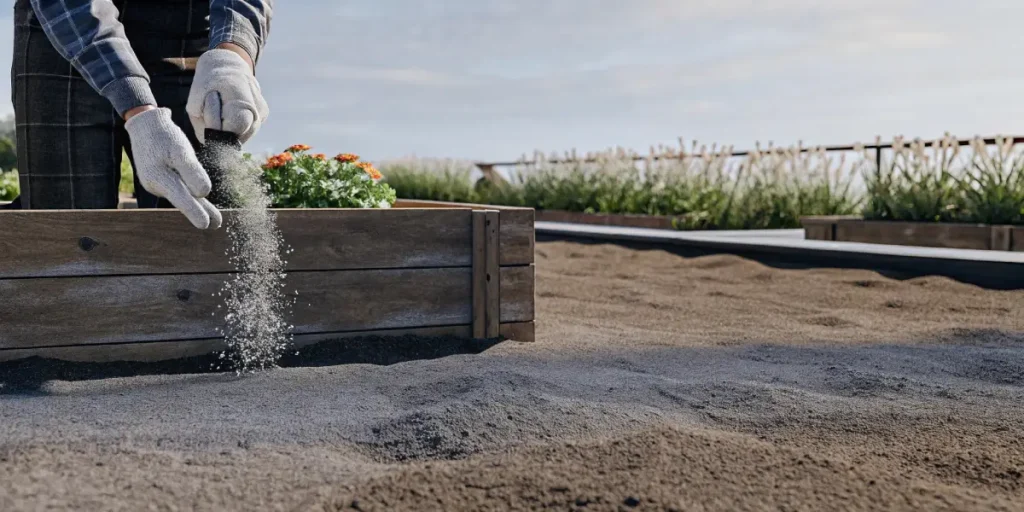
FAQs
Can using weed ash improve water retention in soil?
Interestingly, incorporating weed ash into garden soil can indeed impact its water retention capabilities. The porous nature of ash particles can enhance soil structure, allowing it to hold moisture more effectively. This characteristic of weed ash makes it an excellent amendment for gardens struggling with dry conditions. So, when pondering “Is weed ash good for plants?”, consider its role in not just nutrient delivery but also in improving the water-holding capacity of your soil.
What is the best time of year to apply weed ash to the garden?
Timing is crucial in maximizing the benefits of weed ash for plants. The optimal time for application is either during late fall or early spring. Applying weed ash in late fall allows it to integrate with the soil over the winter, making nutrients readily available as plants start to grow in spring. Conversely, spring application gives an immediate nutrient boost to support the intensive growth phase of many plants. This strategy underscores the importance of asking, “Is weed ash good for plants?” not just in the context of its nutrient content but also in terms of when its application can be most beneficial.
Does weed ash application affect garden pests or diseases?
An intriguing aspect of using weed ash in the garden is its potential pest deterrent properties. The potassium content in weed ash has been noted to strengthen plant cells, thereby making plants more resistant to diseases and pests. However, it’s important to approach this benefit cautiously, as excessive ash can alter soil pH and potentially create an environment conducive to some pests and diseases. This nuanced effect further highlights the complexity behind the question, “Is weed ash good for plants?”
How does weed ash interact with synthetic fertilizers?
When integrating weed ash with synthetic fertilizers, it’s crucial to understand their nutrient profiles to avoid over-fertilization, especially with potassium and phosphorus. Ideally, use weed ash as part of a balanced fertilization plan, considering the nutrient contributions from both organic and synthetic sources. This careful balancing act can enhance the overall fertility of the soil without leading to nutrient excesses that could harm plant health.
Is weed ash suitable for container gardens or indoor plants?
The use of weed ash is not limited to outdoor gardens; it can also be beneficial in container gardening and for indoor plants, albeit in much smaller quantities. For potted plants, a pinch of weed ash mixed into the potting soil can provide a slow-release supply of nutrients. However, due to the confined space and limited soil volume, it’s vital to use a minimal amount to avoid altering the soil pH significantly. This consideration is essential for ensuring the question, “Is weed ash good for plants?” remains relevant and beneficial across different types of gardening.
How should I start using weed ash in my garden to ensure it’s beneficial?
For those new to using weed ash, start with a soil test to understand your garden’s current pH and nutrient levels. Apply a small amount of ash to a part of your garden as a test, observing how plants respond over a season. This cautious approach allows you to gauge the benefits of weed ash directly and adjust its application based on observed plant health and growth.
How does weed ash compare to commercial fertilizers?
Weed ash is a more sustainable and natural option, though it may not always provide nutrients in concentrations as high as commercial fertilizers.
Can weed ash be used on all types of plants?
While beneficial for many plants, it should be used cautiously on acid-loving plants due to its alkaline nature.
How often should weed ash be applied to gardens?
It should be applied sparingly, no more than once a year, to avoid over-alkalinization.
Are there any plants that should not be exposed to weed ash?
Acid-loving plants, such as blueberries and azaleas, may not respond well to weed ash.
How should weed ash be stored for gardening use?
Store it in a dry, sealed container to keep it free from contaminants.
Is it possible to use too much weed ash in the garden?
Yes, excessive use can lead to soil imbalances and potentially harm plants.

